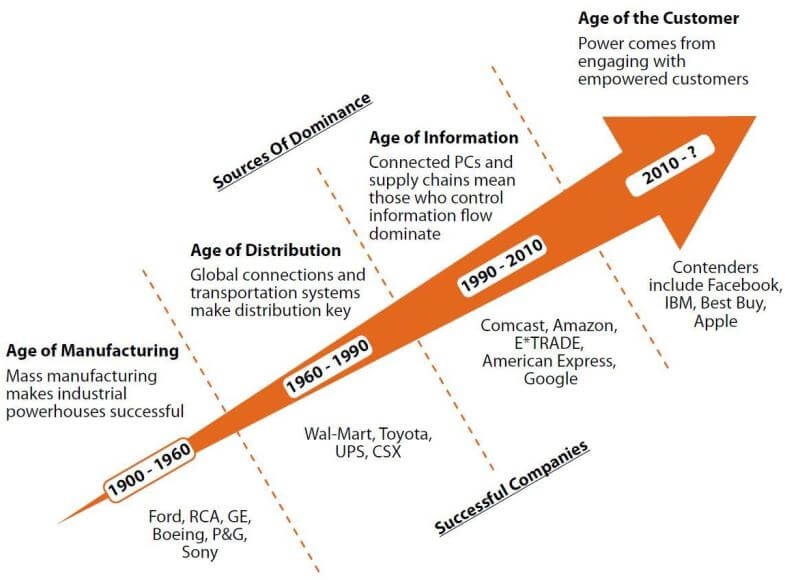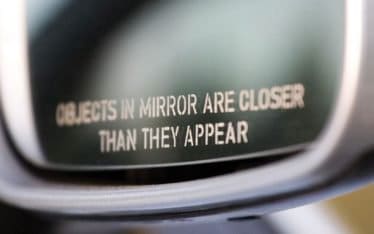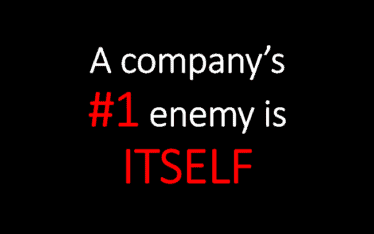Change is an inevitable part of the modern business environment.
Organizations, and the people within them, must constantly re-invent themselves to remain competitive. Sustaining success depends on an organization’s ability to adapt to a changing environment.
Disruption is rampant
Many industries have had some tough years with recession, increased competition, changing consumer behavior, rapidly shifting technologies and emerging disruptive business models.
The world is moving so fast nowadays that the man who says it can’t be done is generally interrupted by someone doing it – (Elbert Hubbard)
What happened to Blockbuster? Why did Blockbuster get into to trouble?
- Online movie rental websites such as NetFlix have been eroding Blockbuster revenue streams, as more and more people opt out for online movie rentals
- Competition from technologies such as video on demand – even traditional TV industry are now disrupted by new distributors leveraging fundamentally different cost structures compared to the old regime
Did you notice:
- When disruptive change hit traditional bricks and mortar – HMV, Jessops, Comet, Boders etc.
- When Kindle ravaged the publishing business?
- When Expedia obsoleted travel agents?
- When HP and Dell ruled the PC business worldwide?
- When Kodak, RIM, Nokia, B&O etc. was hit by disruptive change?
- When smartphones and tablets create numerous opportunities to identify new processes and business models?
Or did you ask yourself:
- Will collaborative consumption disrupt traditional business models?
- Will smartphones and tablet-PC disrupt even more businesses?
Do you get the idea that things are really different now? Did you heave a sigh of relief that it wasn’t you?
Disruption is rampant, it’s hitting every single industry, caused by customers with powerful technology on their side. The question is not whether your industry will be disrupted. The question is when.
Old sources of advantage don’t matter anymore
Old sources of advantage, like manufacturing power, distribution strength, even mastery of information flow, don’t matter anymore.
There’s no longer any barrier to potential entrants or substitutes — in a digital world, competition can come from anywhere. Customers have real-time information about pricing, product features and competitors; they hold all the advantages. And the key source of supply now is talent — and talent can get up and leave. The competitive barriers that Porter defined matter far less now. Digital undermines all of them. The only way to survive one of these disruptions is to invest in customer relationships.
Here’s the punch line of Forrester’s latest report, “Competitive Strategy In The Age Of The Customer:” only the customer obsessed company can survive.
This is not just jargon, it has a real meaning.
A customer obsessed company focuses its strategy, its energy, and its budget on processes that enhance knowledge of and engagement with customers, and prioritizes these over maintaining traditional competitive barriers.
If you believe this:
- You change the way you do research. You spend less on surveys whose results come back too late to act on. You invest instead in real-time listening to social media and the search for customers’ unarticulated needs. You think the iPad came out of surveys?
- You change the way you do service. You invest in a comprehensive cross-channel customer experience program, and stop treating your call center workers as slaves
- You change the way you do sales. You stop incenting your sales force to cram the channel and concentrate on connecting directly with end consumers
- You change the way you do advertising. Take 10% of what you spend on advertising blasts – TV, print, outdoor – and spend it on interactive content, online social programs, and mobile apps that create real connections and loyalty among your customers.
It’s a radical idea. If you do this, then not only will your company be better positioned to survive disruption, but you, the marketer, will be at the center of your competitive strategy.
Of course, you could keep doing what you’re doing now, trying to lock-in customers and lock out competitors with big brand pushes, contracts, and scale. That will work fine until some startup figures a way to serve consumers better and disrupt your business. Fair warning.
A world of constant disruption
This is a corporatewide shift in thinking. The companies that master it, companies like IBM, Best Buy, and Amazon, thrive in a world of constant disruption, because their customers know and trust them, and they make investments in those customers. The companies that keep riding their current model and attempt to lock in customers are doomed. They’re dead men walking. They just don’t know it yet.
Short URL & title:
Surviving disruption in an age where competition comes from anywhere — http://www.torbenrick.eu/t/r/apd
Share it:
If you enjoyed this article, please take 5 seconds to share it on your social network. Thanks!









About The Author
Torben Rick
Experienced senior executive, both at a strategic and operational level, with strong track record in developing, driving and managing business improvement, development and change management. International experience from management positions in Denmark, Germany, Switzerland and United Kingdom